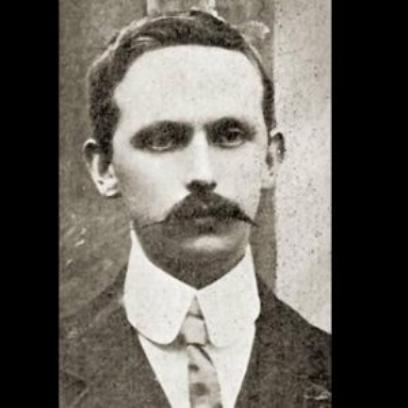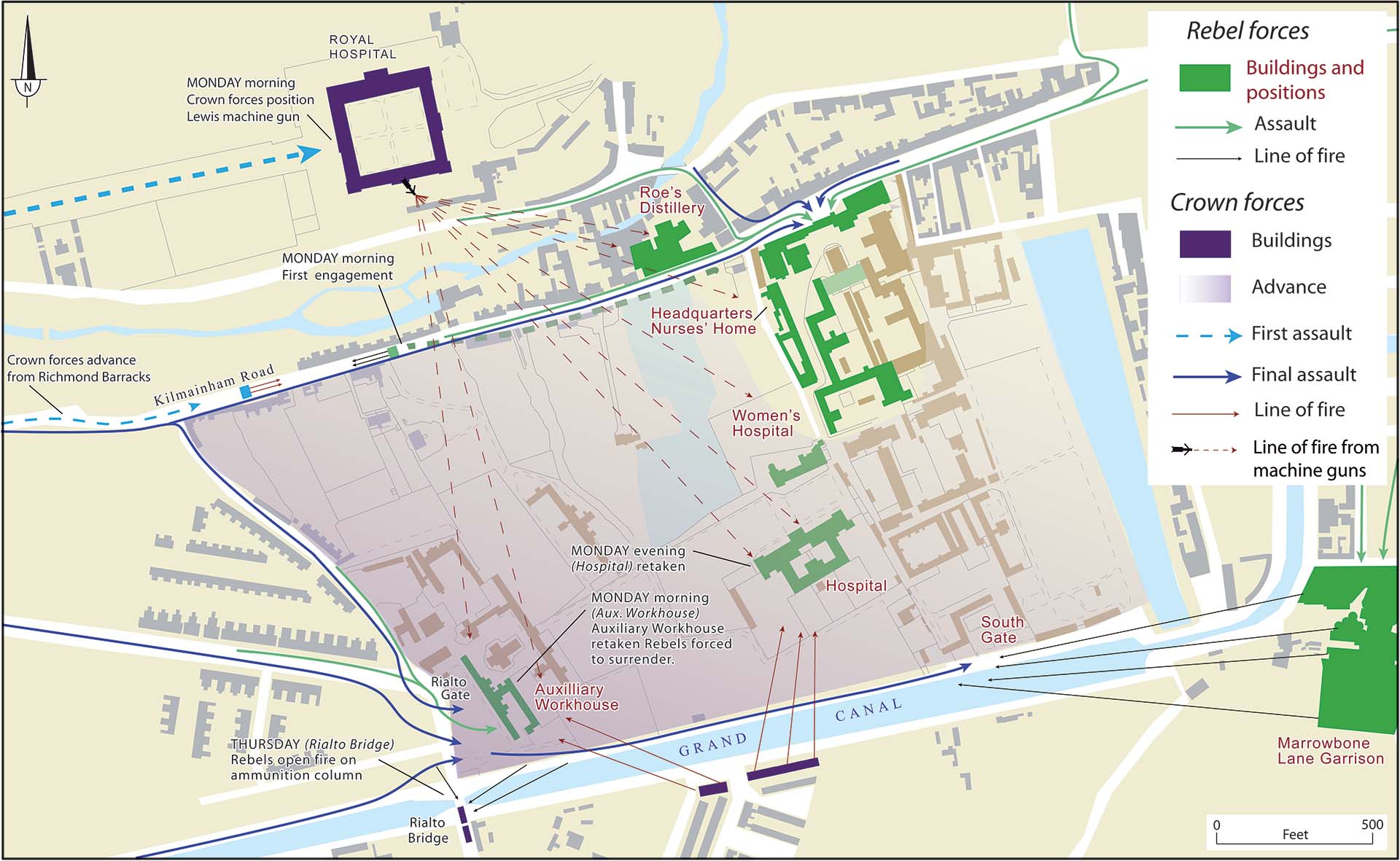- Home
- Collections
- Atlas Resources for Schools
- Cork Fatality Register
- Mapping the Irish Revolution
- Mapping IRA Companies, July 1921-July 1922
- Mapping the Burning of Cork, 11-12 December 1920
- Martial Law, December 1920
- The IRA at War
- The Railway Workers’ Munitions Strike of 1920
- The Victory of Sinn Féin: The 1920 Local Elections
- The War of Words: Propaganda and Moral Force
- The IRA Offensive against the RIC, 1920
- De Valera’s American Tour, 1919-1920
- The British Reprisal Strategy and its Impact
- Cumann na mBan and the War of Independence
- The War Escalates, November 1920
- The War of Independence in Cork and Kerry
- The Story of 1916
- A 1916 Diary
- January 9-15 1916
- January 10-16, 1916
- January 17-23, 1916
- January 24-30, 1916
- February 1-6 1916
- February 7-14, 1916
- February 15-21, 1916
- February 22-27, 1916
- February 28-March 3, 1916
- March 6-13,1916
- March 14-20, 1916
- March 21-27 1916
- April 3-9, 1916
- April 10-16, 1916
- April 17-21,1916
- May 22-28 1916
- May 29-June 4 1916
- June 12-18 1916
- June 19-25 1916
- June 26-July 2 1916
- July 3-9 1916
- July 11-16 1916
- July 17-22 1916
- July 24-30 1916
- July 31- August 7,1916
- August 7-13 1916
- August 15-21 1916
- August 22-29 1916
- August 29-September 5 1916
- September 5-11, 1916
- September 12-18, 1916
- September 19-25, 1916
- September 26-October 2, 1916
- October 3-9, 1916
- October 10-16, 1916
- October 17-23, 1916
- October 24-31, 1916
- November 1-16, 1916
- November 7-13, 1916
- November 14-20, 1916
- November 21-27-1916
- November 28-December 4, 1916
- December 5-11, 1916
- December 12-19, 1916
- December 19-25, 1916
- December 26-January 3, 1916
- Cork's Historic Newspapers
- Feature Articles
- News and Events
- UCC's Civil War Centenary Programme
- Irish Civil War National Conference 15-18 June 2022
- Irish Civil War Fatalities Project
- Research Findings
- Explore the Fatalities Map
- Civil War Fatalities in Dublin
- Civil War Fatalities in Limerick
- Civil War Fatalities in Kerry
- Civil War Fatalities in Clare
- Civil War Fatalities in Cork
- Civil War Fatalities in the Northern Ireland
- Civil War Fatalities in Sligo
- Civil War Fatalities in Donegal
- Civil War Fatalities in Wexford
- Civil War Fatalities in Mayo
- Civil War Fatalities in Tipperary
- Military Archives National Army Fatalities Roll, 1922 – 1923
- Fatalities Index
- About the Project (home)
- The Irish Revolution (Main site)
Easter Week Timeline: Tuesday 25 April 1916

As British Authorities tried to get to grips with the outbreak of rebellion in Dublin the day before, command of military forces was given to General William Lowe.
4am
In an effort to dislodge the Irish Citizen Army, which had occupied St Stephen’s Green, military occupied the nearby Shelbourne Hotel and targeted the park with machine-gun fire. This forced a retreat by ICA to the Royal College of Surgeons.
8am
The Nurses’ Home of South Dublin Union was barricaded by men under Éamonn Ceannt, one of the signatories of the Proclamation of the Irish Republic read aloud the day before by Patrick Pearse.
Six Irish Volunteers had died the day before, and another would die there on the second day of the Rising. But casualties during the week also included some of the 1,000 plus patients and staff in the facility.
Meanwhile, in the city centre, the British military focused on Trinity College Dublin, where an officer training corps was based. It moved its headquarters within the campus to the front of the college, giving a wide range for sniping at rebels moving around College Green and Dame St.
This cut off a route for communications and movement of the Volunteers and ICA, as well as acting as a deterrent to looting in the immediate vicinity of the University.
2pm
City Hall had been taken over the previous day by the ICA after the unsuccessful attempt to take over Dublin Castle at the start of the Rising 24 hours earlier. By Tuesday evening, martial law was declared in Ireland.
On Tuesday night, as he returned home to Rathmines after trying to deter civilians from looting, pacifist Francis Sheehy-Skeffington was arrested by troops under command of Captain J.C. Bowen-Colthurst from Cork.
That evening, a British gunboat had arrived and shots had been fired at Boland’s Mills, occupied by Irish Volunteers commanded by Éamon de Valera.
The South Dublin Union: Map & Caption

The South Dublin Union overlooked the anticipated line-of-march of British troops coming from Richmond Barracks and the Curragh army camp in Kildare. The walled fifty-acre complex accommodated Dublin’s poorest and most infirm residents in an assortment of hospitals, halls, wards, and work structures.
Despite the risk to those inmates, sixty Volunteers in Éamonn Ceannt’s 4th Battalion occupied the Union grounds at midday Monday. They barricaded gates and building doors, and burrowed internal tunnels to bypass corridors and connect firing positions. Additional rebel garrisons were established inside strong industrial buildings at Jameson’s Distillery on Marrowbone Lane and Roe’s Distillery on Mount Brown.
On Monday afternoon, 24 April the Volunteers repulsed initial British attacks on the barricaded South Gate and front gate, though the rebels at Rialto Gate and the Auxiliary Workhouse surrendered after a brief fight. As a British machine gun on the roof of the Royal Hospital continually peppered the rebel positions, troops forced the front gate and entered the Union complex on Kilmainham Road, while additional soldiers moved in from Rialto gate onto the ‘2-3 hospital’. After close-quartered combat inside those structures, the rebels fell back to the adjoining Nurse’s Home and to the Women’s Hospital.
However, Tuesday morning, British commanders withdrew their troops from the Union grounds, allowing the rebels to again reoccupy their former positions. Outside the Union, the Jameson’s garrison held out, while the rebels evacuated Roe’s Distillery.
On Thursday, 27 April troops again entered the Union and fought their way through towards the three-story Nurse’s Home, braving fire from outnumbered rebels in the building blocks overlooking their advance. After the Nurse’s Home defenders repulsed the assault, British troops in the adjoining building (the bakery) dug through the external wall separating the two structures. Their entry into the Nurse’s Home sparked room-to-room fighting, with the rebels barely holding on. However, frustrated British commanders again ordered their troops to retire from the Union on Thursday evening. Thereafter, they left the defiant garrison alone until Patrick Pearse ordered its surrender on Saturday afternoon. [Source: Atlas of the Irish Revolution, (CUP, 2017)]
